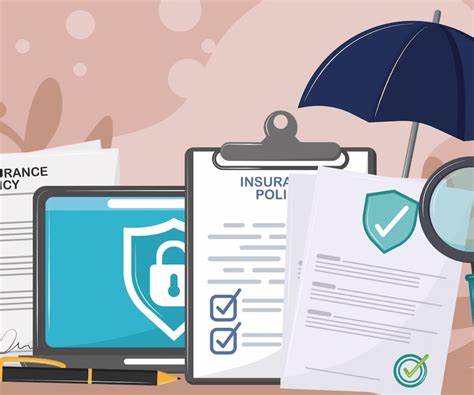When you’re involved in a car accident or experience vehicle damage, the last thing you want to deal with is a complicated and time-consuming insurance claim process. The key to a smooth, fast, and stress-free claim lies in understanding how to navigate the process efficiently. In this article, we’ll explore practical tips for ensuring that your car insurance claim is handled promptly and without unnecessary hurdles. From documentation to communication, knowing the best practices can make all the difference when it comes to receiving your payout in a timely manner. Whether you’re filing a minor claim or dealing with a more significant accident, these tips will help you manage the claims process with confidence and ease.
1. Choose the Right Car Insurance Provider
The first step toward getting a hassle-free claim is selecting the right car insurance company. Not all providers offer the same level of service or speed when it comes to claims processing. Before purchasing your policy, do thorough research on the insurer’s reputation for handling claims efficiently. Check reviews from current and former policyholders about their experiences with filing claims.
- Look for Insurers with Quick Response Times: Opt for companies known for their responsiveness and quick claims processing.
- Examine the Claims Process: Some companies offer streamlined claims procedures, making it easier for you to file and track your claim online.
2. Understand Your Coverage and Policy Terms
Before you’re in the unfortunate position of needing to file a claim, make sure you fully understand your policy’s coverage and terms. Familiarizing yourself with your car insurance policy will help you know what to expect and avoid surprises during the claims process.

- Know What’s Covered: Review the inclusions and exclusions in your policy to understand exactly what’s covered. Whether you have liability, collision, comprehensive, or full coverage, it’s important to know which types of accidents or damages are eligible for a claim.
- Examine the Deductible: Understanding your deductible amount can help you manage expectations for out-of-pocket expenses. A lower deductible generally results in a higher premium but can save you money in the event of a claim.
3. Document the Accident Scene Thoroughly
One of the most important steps in ensuring a smooth claims process is collecting thorough documentation after an accident. The more evidence you have, the faster and more efficiently your claim will be processed.
- Take Photos of the Damage: Always take clear, detailed photos of the accident scene, including all vehicles involved, damage to your car, and any surrounding areas. Capture any skid marks, traffic signs, and road conditions that may have contributed to the incident.
- Record the Details: Write down or use your phone to record important information such as the date, time, location, weather conditions, and the contact information of any involved parties (drivers, witnesses, police officers).
- Obtain a Police Report: If the accident is serious, always file a police report. A police report adds credibility and can expedite the claims process. Be sure to obtain a copy of the report as it may be required for your claim.
4. Report the Claim Immediately
Once the accident has occurred, it’s crucial to report the claim to your insurance company as soon as possible. Many insurance providers require that you notify them within a specific time frame, typically 24 to 48 hours after the incident.
- Be Honest and Forthcoming: When reporting your claim, provide truthful and detailed information about the accident. Misrepresentation or omissions can delay the claims process or result in denial of the claim.
- Follow Instructions Carefully: Make sure you follow the steps outlined by your insurer. Some companies may ask you to fill out an online claim form, while others may prefer you to call their claims department directly.
5. Keep Track of All Documentation and Communication
Proper record-keeping during the claims process can significantly expedite the resolution. From the moment you file the claim until the time you receive your settlement, keep a file of all relevant documentation.
- Save Correspondence: Keep a copy of all emails, letters, and text messages exchanged with your insurance provider.
- Track Your Claim Progress: Many insurers offer online portals where you can track the status of your claim in real time. This can help you stay informed and avoid unnecessary delays.
6. Work with a Claims Adjuster
Once you’ve submitted your claim, a claims adjuster will typically be assigned to assess the damage and determine how much the insurer will pay out. To ensure that this step goes smoothly, it’s important to be cooperative and provide all requested information promptly.
- Be Ready for an Inspection: The claims adjuster will likely schedule an inspection to assess the damage to your vehicle. Be prepared by having your car accessible and in the condition it was in at the time of the accident.
- Ask Questions: If you’re unsure about any part of the process, don’t hesitate to ask the adjuster for clarification. Knowing exactly what’s required and what to expect can prevent unnecessary back-and-forth.
7. Get Repair Estimates from Trusted Mechanics
In some cases, you may be required to provide repair estimates as part of your claim. Having a reliable and trusted mechanic evaluate the damage can help speed up the process.
- Visit Certified Shops: Many insurance companies have partnerships with approved repair shops. If your insurer provides a list of recommended repair facilities, consider using one of these to streamline the approval process.
- Obtain Multiple Estimates: If your insurer doesn’t have a preferred shop, it’s a good idea to get estimates from multiple certified mechanics. This can ensure that the repair costs are fair and in line with industry standards.
8. Avoid Making Unnecessary Changes to the Vehicle
Once the accident has occurred and you’ve begun the claims process, avoid making changes or repairs to the vehicle until the insurance adjuster has assessed the damage. Modifying or repairing the car before the adjuster has seen it may result in delays or disputes.
- Leave the Damage as Is: If possible, leave the vehicle in the condition it was in immediately following the accident. This will help the claims adjuster assess the full extent of the damage.
- Limit Self-Repairs: Small fixes, like replacing a broken headlight or cleaning up debris, may be acceptable, but large repairs should be postponed until the insurance company has conducted its investigation.
9. Follow Up Regularly on Your Claim Status
While waiting for your claim to be processed, it’s important to follow up regularly to check on the progress. Being proactive in communicating with your insurance company can help expedite the process and address any issues before they become bigger problems.
- Set Reminders: If your insurance company provides a claims timeline, use reminders to check in at key milestones.
- Stay Organized: Keep track of all your communications with the insurance company, including phone calls, emails, and letters, so that you can refer to them as needed.
10. Understand the Settlement Offer
Once your claim has been processed, you’ll receive a settlement offer. Before accepting it, carefully review the offer to ensure it fully covers your damages and losses.
- Review the Details: Understand how the settlement is calculated, including any deductions for your deductible, depreciation, or non-covered items.
- Ask for Clarification: If you don’t fully understand the offer, ask the claims adjuster to explain it in detail. Don’t hesitate to negotiate if you believe the settlement is lower than what you deserve.
11. Know When to Appeal
If you’re dissatisfied with the outcome of your claim, it’s important to know your rights and how to appeal the decision. Many insurance companies have an appeals process that allows you to contest the settlement offer.

- Review Policy Terms: Make sure you’re aware of your policy’s appeal process and time frame. Often, there is a window of time in which you can challenge a claim decision.
- Provide Additional Evidence: If you can gather more documentation or evidence that supports your case, be sure to submit it during the appeal process.
Conclusion
Getting a quick and hassle-free car insurance claim is possible with the right preparation and understanding of the claims process. By choosing a reliable insurance provider, documenting the accident thoroughly, and following up regularly, you can significantly reduce the stress of filing a claim. Additionally, understanding your coverage, working with the claims adjuster, and being proactive about repairs will ensure that your claim is processed efficiently. By using these tips, you can help ensure a smooth and timely resolution to your car insurance claim.

Leave a Reply